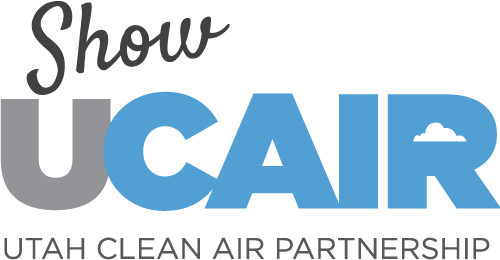For this month’s Partner Meeting, we were joined by Nathan Rafferty, Ski Utah CEO/President, Vicki Varela, Managing Director of the Utah Office of Tourism, and Ryan Mack, Media & Communications Director of Visit Salt Lake. We discussed the correlation of tourism and air quality.
Vicki Varela started our discussion with an update from the Utah Office of Tourism. She reviewed the successes of the Mighty Five campaign. This campaign grew into the Red Emerald Strategy, elevating life in Utah through responsible tourism stewardship. The strategy prioritizes quality visitation, not just quantity of visitors, distributes visitation, and enables community led visitor readiness. The Utah Office of Tourism has worked with Tree Utah & Forever Mighty Utah volunteerism opportunity initiatives allowing visitors to participate in and plant trees while they are visiting Utah. The tourism office is also working closely with the Governor’s Office and the Office of Energy Development on the build out of EV charging stations throughout the state to make a seamless visitor experience. Moreover, Utah is part of a regional initiative in the Intermountain West focusing on creating consistent branding to connect EV charging corridors throughout the region – the project is called CORWest and is in partnership with the Utah Clean Cities Coalition and the National Association of State Energy Offices (NASEO). This project is exciting as it is expected to encourage slow and immersive travel throughout the region and allows for each state to increase investments in outdoor recreation infrastructure that improves quality of life for the residents as well as better connect communities. For more information on the Utah Office of Tourism please visit the website, linked here.
We then heard from Nathan Rafferty, CEO and President of Ski Utah. It has been an interesting year for the ski industry. Nationwide, the industry lost around two million dollars during the shutdown that shortly followed the start of the COVID-19 pandemic. Utah then grappled with the conversation of how to open safely the next winter 2020-2021. That season Utah experienced record-breaking ski participation with just 75% of the average annual snowfall. Utahns and visitors alike want to be outside and experience Utah’s wonderful snow, now more than ever! Ski Utah has been working with partners to address roadblocks such as transportation in the Cottonwood Canyons, as well as air quality impacts to the industry. As the climate changes, the ski industry is largely affected by the snowfall, or rather lack thereof. A lot of forward moving conversations have been happening that will make a difference in how we interact with our natural environments. One exciting initiative that was recently announced that Ski Utah is now climate neutral! For more information on Ski Utah, the official snow report, and trip planning please visit the website here.
Ryan Mack from Visit Salt Lake continued our discussion on Salt Lake City’s tourism industry. Visit Salt Lake has been working closely with Salt Lake County to help attract and promote events and conventions. The organization has a strong commitment to sustainability in Utah’s community and several staff members serve on local nonprofit organization boards. Additionally, many sustainability efforts circled around the Salt Palace Convention Center’s recent remodel. The building is now a LEED certified building and houses North America’s 9th largest rooftop solar panel array generating more than 20% of the building’s energy. They have also been working closely with the Outdoor Retailer show and Utah has a good chance of it coming back to the state. To view more about Visit Salt Lake you may visit the website here.
We then had an air quality update from Bryce Bird, Utah Air Quality Division Director. Utah Legislative Session came to a close on March 4th. There were several bills regarding transportation infrastructure and climate. There was also a great focus on water throughout the session, specific to the receding Great Salt Lake and how it relates to our snow impacts, but also how it effects the air quality from the dust impacts from the drying lakebed. As for funding, there was a record number of appropriation requests, although the DAQ will be receiving much of what they requested including funding for the implementation of photo chemical assessment monitors to monitor ozone along the Wasatch Front. Additionally, funding was allocated for Wasatch Back air monitoring systems for Summit County and Wasatch County as well one time funding for ozone public education and for DAQ scientist’s salary increase.
As for air quality in Utah, this winter we had 32 air quality action days which is lower than previous years. The Association for Air Pollution Control Agencies (AAPCA) will meet here in Utah this year, April 27-29th. This is a great opportunity to learn what’s going on regarding air policy, and what the EPA is focusing on. For more information on the meeting see the event page here.
Additionally, we are waiting for federal action to designate our area as a moderate non-attainment area for ozone. Once the EPA designates our previously designated marginal area to moderate, we will have increased requirements under the Clean Air Act to implement a state implementation plan (SIP) relating to ozone. We are planning to do is a series of meetings to gather information from the public for ideas on how to mitigate ozone pollution. Please review the Ozone SIP website and the interactive emissions inventory tool, and of course, submit your emission reduction ideas here.

